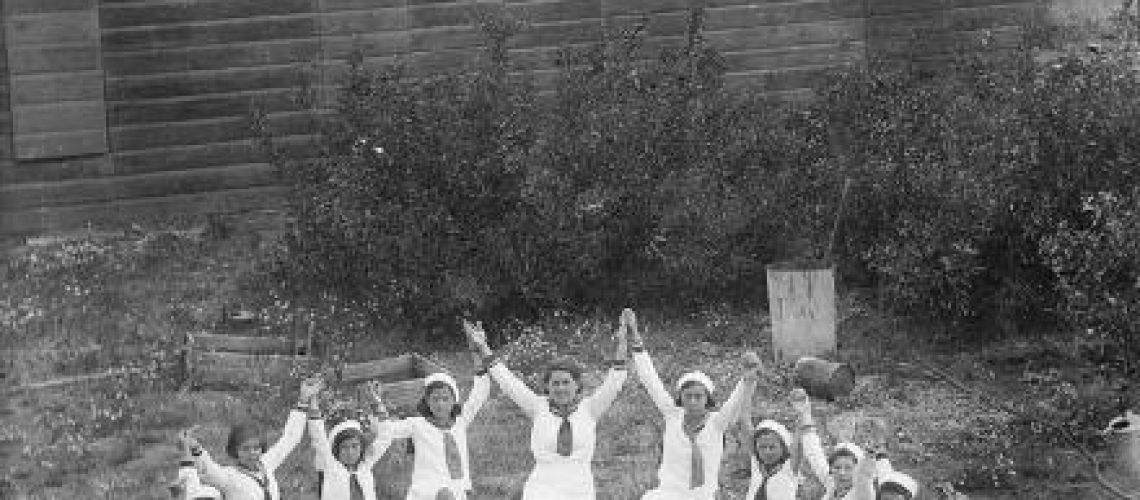Do a quick Google search on Tu Be’Av, and two sorts of material will appear. The first describes a festival dating back to late antiquity, in which, according to Mishnah Ta’anit 4: 8, “On these days [the 15th of Av] the daughters of Jerusalem would go out in borrowed white garments in order not to shame anyone who had none. . . . The daughters of Jerusalem would come out and dance in the vineyard. What would they say? Young man, lift up your eyes and see what you choose for yourself. . .”
Along with this ancient matchmaking festival, we might also learn of the revival of Tu Be’Av in modern Israel, as a Jewish Valentine’s Day, or festival of love. The Orthodox world, in Israel and beyond, has also taken up this day as a “Global Day of Shidduchim,” in which great rabbis pray, without charge, for unmarried men and women to find their mates.
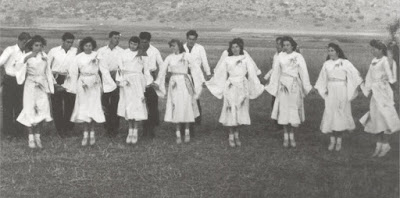

But the Bais Yaakov Project archives tell another story: Tu Be’Av, it turns out, may have been first revived in the modern period neither by modern Zionists celebrating romance nor by Orthodox organizations praying for “shidduchim.” The Bais Yaakov Journal Issue 4, year 3 (1926) reports that the summer of 1926 saw local celebrations of Tu Be’Av throughout Poland. The newspaper describes the numerous correspondents who wrote in to the office of the Bnos (the youth movement associated with the Agudah and Bais Yaakov) to report on how they had celebrated the day and to express “the outpouring of joy awakened by the revival of this traditional historical women’s holiday.”
That this was not a one-time occurrence in 1926 but a regular feature of Bnos and Bais Yaakov life is evident from other writings, including by Sarah Schenirer, detailing how this old-new holiday might be celebrated, and clarifying its meaning for the Bais Yaakov movement. One participant in a Tu Be’Av ritual led by Sarah Schenirer herself provided a rich description of the 1932 celebration in the woods of Skawa, a village thirty miles south of Krakow where the seminary students were spending the last summer before they left for their assigned teaching posts.
The celebration of Tu Be’Av, in Hodo Movshowitz’s retelling, involved a moonlight hike in the woods, with 115 students and teachers walking hand-in-hand behind their leader and guide, Sarah Schenirer. After some difficulties, a bonfire is lit, and a student gives a talk, followed by Sarah Schenirer, and then the girls and women rapturously and prayerfully sing and dance, an experience of great mystical meaning.
Tu Be’Av was revived in Bais Yaakov as a “traditional historical women’s holiday”; the student who spoke to the group around the bonfire explained its meaning, according to the description, as “the holiday that belongs to us, to young Jewish women.” The ecstatic dancing was done not before the eyes of prospective mates, as in the Mishnah, but rather, Movshowitz stresses, with no one watching. Tu Be’Av was celebrated in Poland by Orthodox Jewish girls and women, alone in the woods with their God, their guide, and each other.
Below is the article that appeared in the 1932 issue of the Bais Yaakov Journal, translated by Frieda Vizel.
Tu Be’av 1932 in Skawa
written by
Hoda Movshowitz
[Nowogródek, Yiddish Navordok]
Teacher in Sokolov
Evening. The sun is about to set. It is already on the other side of the linden trees [1]. (Yes, the trees of Skawa, you will remain in our memory for a long time!) And suddenly it occurs to me: why does the sun hide behind these giant trees every day before it sets? Does it hide behind these enormous trees to prevent people from seeing the last few moments of its day? Maybe it doesn’t want people to see the impressions it has witnessed of all human deeds — is that why it reddens so with shame, and hides its face among the enormous trees?
But I can’t be lost in thought for long. The sound of some exalted mood reaches my ears and rouses me from my speculations.
All the seminary girls are standing in front of the villa, ready for our excursion. We count a hundred and fifteen, and I too am among them.
And so we set out.
Frau Schenirer at the head. One hundred and fifteen of us go step by step, hand in hand, along the path, Frau Schenirer first among us, our guide. Our hearts beating with extraordinary joy, we follow in the steps of our leader and flag-bearer.
The sun is already completely gone. A star-speckled sky is above us. The glow of the moon illuminates our path.
And we walk and walk, but to where? Our great leader is before us, and we follow her lead.
Finally, we reach a forest. It’s pitch dark all around. The trees obstruct even the bright glow of the moon.
Suddenly, the center of our group lights up. “Campfire!” we pass the word from ear to ear. A flash of light, and then it’s pitch dark again. Something over there doesn’t want to burn. The bonfire doesn’t want to start. Our teachers busy themselves with it, to no avail. Some of us despair, but not those in charge of lighting fire, who keep on working with their bundle of twigs. They work with all their energy, lying flat on the ground with their faces close to the spot where a tiny spark still flickers. There they add a bit of their own life force and, finally, they’re successful and the fire catches.
Soon a large fire is burning in the center of our circle, almost like the Jewish fire which we kept burning for so long, deep in our hearts.
It’s quiet. No one dares to speak out loud, to break the silence, to interfere with what we are all feeling. Who? Every one of us! Because we are all experiencing something tremendous—you can see it in our eyes. . .
And then someone does break the silence. Who speaks? One of the students, who begins to give a talk. She speaks and each of her words rings out and is echoed back by the trees.
She speaks of the meaning of the fifteenth day of the month of Av, about the holiday that belongs to us, to young Jewish women. The mood is serious, even sad, as she finishes.
Again a silence lasts for a long time. From time to time we hear the crackle of the burning twigs. And suddenly we hear the voice of Frau Schenirer. All eyes are now focused in one direction, and with great anticipation we listen to the words of our great leader.
Her eyes and the features of her face are sunken in the firelight, but her voice rings out: “And the fire upon the altar shall be kept burning thereby, it shall not go out; and the priest shall kindle wood on it every morning; and he shall lay the burnt-offering in order upon it, and shall make smoke thereon the fat of the peace-offerings” [Leviticus, 6: 5]. And she draws a picture to help us understand what this means. In the desert among the camps of Israel, the tribe of the Levites, and in their midst the tabernacle and the altar on which a fire burns that may never go out. This fire was sent by God himself to the altar. So was this divine fire not all that was needed to burn the sacrifices? But no, every morning the priest would add some wood. The divine fire can only burn for us when we have such divine priests who guard it, who feed the fire without cease, who add firewood without tiring of it. Only then can we be sure that the fire will always burn on our altar. And then, no power in the world can extinguish it.
And after a short silence her voice rings out again. “Many waters cannot extinguish love” [Song of Songs, 8: 7]. Every person has within herself an altar. The heart of each person is a temple, and the fire that burns of its altar is the “Fear of God” and “Love of God”. God starts off this fire on our altar. But we have to guard this spark, to blow on it again and again, without tiring.
And again there is silence. All eyes are turned to the fire. Meanwhile it burns; dry twigs flame out on the ground. Our eyes are burning, too, and maybe something else as well, something invisible, in a secret place, a small and hidden flickering flame. No question about it — each and every one of us knows this about herself, without the slightest doubt.
And suddenly we hear again the familiar voice; “Let the children sing!”
And so we sing. Suddenly we are so overcome with the urge to sing that no power in the world can stop us.
“There is none like our God!”
We sing. Quietly at first, and then louder and louder and from the middle of that song, the tune of a deep prayer rings out:
“Cleanse our hearts so we can serve you in truth!” And ever more beautiful and stronger grows the song, until we are no longer singing — this is a fervent prayer!
And it continues for another minute or two, until some extraordinary longing overcomes our soul, and out of our hearts tear the words “Next year in Jerusalem!”
The tune grows stronger, more emotional, more prayerful. The fire in our eyes grows brighter, more radiant. We add wood to the fire and the flames leap up. We can no longer sit still, we rise. Everyone wants to dance.
And so we dance.
Alongside us dances our leader, Frau Schenirer. Hand in hand with us, together. We dance, we can no longer see anything before our eyes. Our eyes close, our souls pine for something, everything around us disappears. It is so good… Our feet dance of their own accord. And so we dance, strong, stronger, even stronger still.
The dancing lasts for a long, long time, and still dancing we return from the woods. And still we dance. We dance as we accompany Frau Schenirer home, and only later do we ourselves go to sleep.
***
That was the fifteenth of Av, 1932, in Skawa. A year has already passed since then. We have dispersed, each to her own way. But did the bonds we forged then slacken? No, a thousand times no!
We hold each other by the hand, united in one organization, united just as we were then, as we danced out of the woods with no one seeing us. We are each and every one of us deeply connected with the rest, even as each of us works in our own circle.
[1] In old Slavic mythology, the linden (lipa, as called in all Slavic languages) was considered a sacred tree. Particularly in Poland, many villages have a name “Święta Lipka” (or similar), which literally means “Holy Lime”.
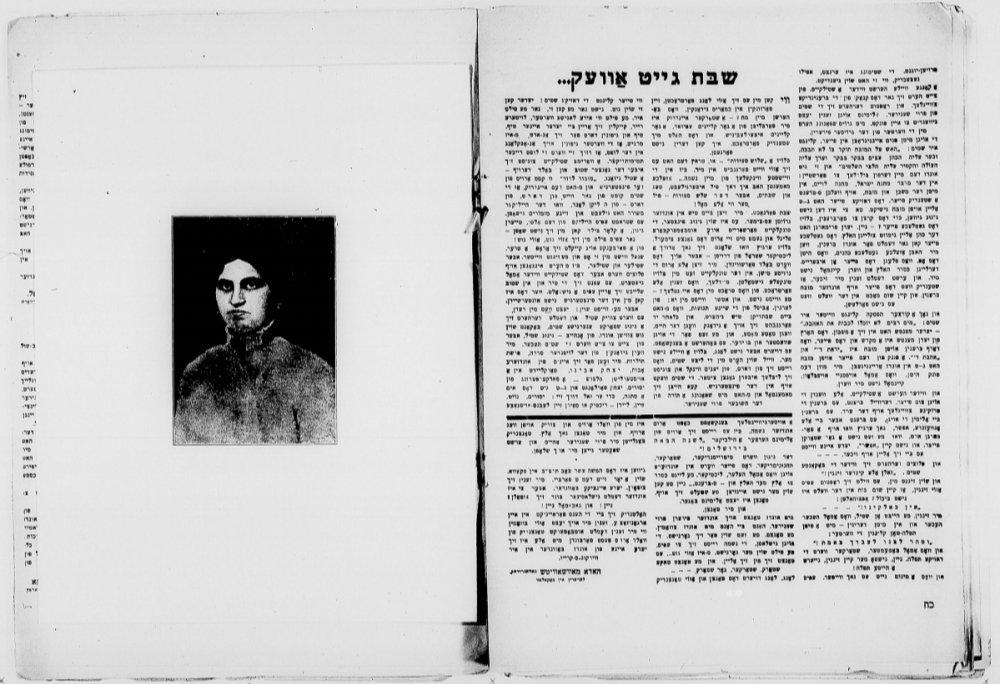
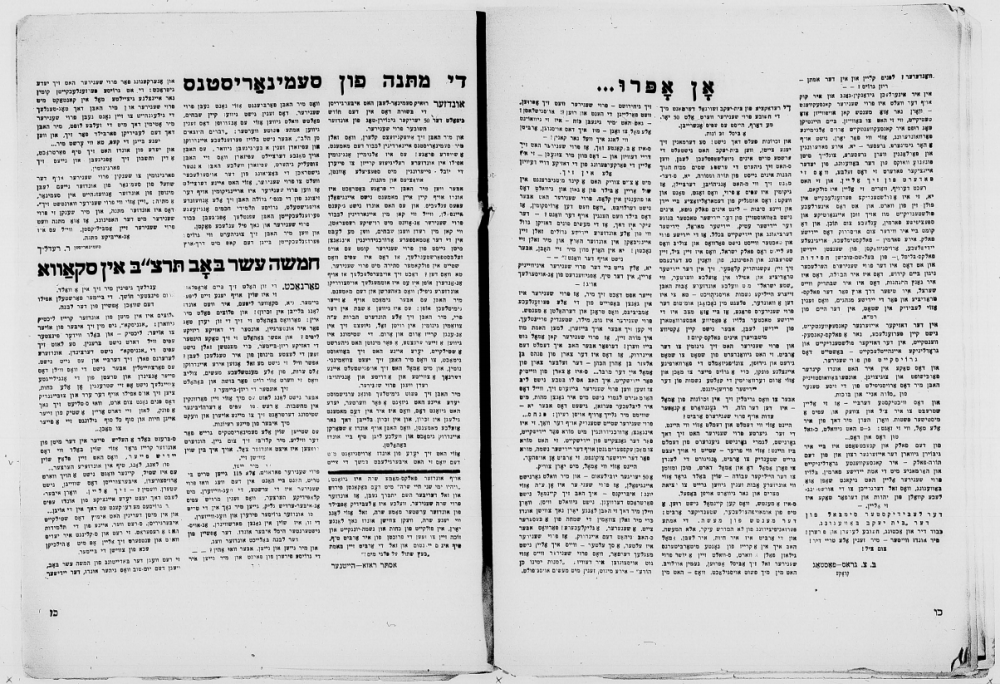
?האם שרה שנירר ובית יעקב הקימו לתחייה את ט”ו באב
חיפוש מהיר של צמד המילים “ט”ו באב” מעלה שני סוגים של תוצאות. הסוג הראשון עוסק בתיאור תקופה קדומה בתולדות עם ישראל ובה בנות ירושלים היו יוצאות לכרמים לחפש להן חתן (תענית ד, ח). התוצאות מן הסוג השני מתארות את תחייתו של פסטיבל השידוכים התנ”כי בישראל בימינו אנו. אם כ”יום האהבה” המזמן חגיגות ומסיבות, ואם בתפיסה אורתודוקסית – ולפיה ט”ו באב נתפס כ”יום השידוכים העולמי” ובו נישאת תפילה שרווקים יזכו למצוא את בני זוגם במהרה.
חיפוש מהיר בארכיוני פרוייקט “בית יעקב” מעלה תוצאות שונות בתכלית. ט”ו באב, כך מסתבר, קם לתחייה מחודשת בקיץ 1926 שבו נערכו לראשונה חגיגות מקומיות של החג ברחבי פולין (כתב העת “בית יעקב” גיליון 4, שנה 3). כתב העת מתאר בהרחבה כיצד הגיעו כתבי חדשות מקומיים למשרדי “הבנוס” (תנועת הנוער של בית יעקב ואגודת ישראל) לסקר את האירוע. החגיגות תוארו כ”שמחה אדירה שהתעוררה בעקבות תחייתו של חג הנשים המסורתי”.
זאת ועוד, נראה כי חגיגות ט”ו באב בשנת 1926 לא היו אנקדוטליות בלבד, אלא אירוע מתמשך שאירע אחת לשנה. מסמכים אחרים, כולל כתביה של שרה שנירר מתארים במפורט כיצד יש לחגוג את החג החדש-ישן הזה, ומבהירים את משמעותו עבור תנועת בית יעקב. בשנת 1932, כך עולה מיומנה של אחת התלמידות, נחגג החג ברוב שמחה בהובלתה של שרה שנירר עצמה ביערות סקאווה, כשמונים ק”מ דרומית לקראקוב, באיזור שבו נפשו התלמידות בסמינר קיץ זמן קצר לפני שפנו לעבודה כמורות. תיאור מרגש נוסף נמצא בסיפורה של הודא מובשוביץ על ט”ו באב שבו היה ליל ירח מלא, ושרה שנירר הובילה 115 תלמידות בשיר ובתפילה. הטקס כלל הדלקת מדורה, נאומים, שירה וריקודים. הטקס מתואר כהתעלות רוח מיסטית של ממש.
מכתבים אלו ניתן לממוד כי ט”ו באב קם לתחייה בבית יעקב כ”חג הנשים המסורתי”, התלמידה שתיארה את הלילה התייחסה אליו כ”חג השייך לצעירות היהודיות”. הריקודים, הגם שלא נעשו לנגד עיניהם של בני זוג פוטנציאליים כפי שמדגישה מובשוביץ, נחגגו ברוב עם, בקבוצות של נשים יהודיות אורתודוקסיות, עם המדריכה הנערצת וזו עם זו. נראה כי משמעותו של ט”ו באב כחג נשים השייך לצעירות יהודיות לא רק שימש כגשר בין המסורת והכתבים היהודיים לבין מציאות חייהן של הנערות, אלא גם הוסיף נדבך של שייכות קבוצתית וגאוות יחידה למורות לעתיד, שתפקידן כמנהיגות רוחניות בקהילות יהודיות היה קריטי באותם ימים בפולין.
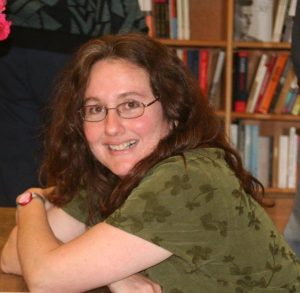
Naomi Seidman is the Chancellor Jackman Professor of the Arts in the Department for the Study of Religion at the University of Toronto and a 2016 Guggenheim Fellow; her 2019 book, Sarah Schenirer and the Bais Yaakov Movement: A Revolution in the Name of Tradition, explores the history of the movement in the interwar period. Naomi’s book was a finalist in the National Jewish Book Award’s Education and Jewish Identity category and a winner in the Women Studies category.

